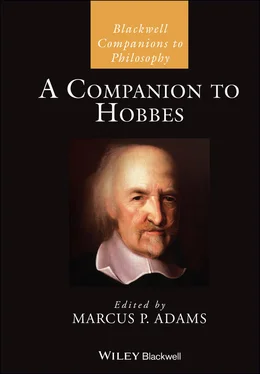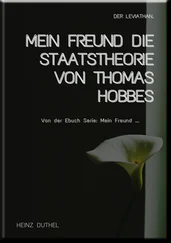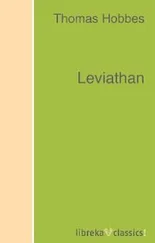8 8 Most Scholastic Aristotelians accept Aristotle’s claim at the start of Nicomachean Ethics that practical matters do not allow for the same precision as theoretical matters and hence require a distinct method (Aristotle 1984, 1730).
9 9 Zabarella notes, when we define mathematical entities, our definitions are advanced as principles “since they are heard and understood at the same time, and are known per se” (Zabarella 1597, 159). This is because things like “line” and “surface” are simple accidents, so the declaration of merely the word suffices to signify the essence. In other words, in mathematics, nominal and essential definitions of the object coincide; thus, in mathematics, one has a perfect definition once one obtains a nominal definition. This view was shared by seventeenth-century mathematicians, like the Jesuit Josephus Blancanus, who claims that most mathematical definitions bear the advantage of being both nominal and essential definitions: “when it is said that an equilateral triangle is one having three equal sides, at once you see the cause for both the name and the thing” (Blancanus 1996,181). Blancanus’s work is cited in Marin Mersenne’s early publications, making it likely that Hobbes was exposed to Blancanus’s mathematical theory, via the Mersenne Circle. On this theory, definitions of mathematical objects carry the distinct advantage that their names concurrently tell you how the object is caused.
10 10 As Karl Schuhmann points out, both Hobbes and Spinoza appear to adopt Hero of Alexandria’s generative approach to defining geometrical objects (Schuhmann 1987, 72).
11 11 Marcus Adams, following Pérez-Ramos, calls this “maker’s knowledge” and argues that it constitutes the causal knowledge of scientia for Hobbes. On his interpretation, Hobbes’s commitment to maker’s knowledge accounts for why geometry and civil science are the only instances of science for Hobbes (Adams 2019, 2). Since both the geometer and the political philosopher construct their actual object, the same procedure can be applied in these domains, a procedure not available to the physicist who studies objects generated by natural processes.
12 12 Oddly, Hobbes’s example to reveal the parts into which we resolve our conception of the individual nature of a square does not indicate that these parts would combine to generate the square in the same manner. “Plane” and “line” do not generate a square in the way a point in motion generates a line. The same can be said of the definition of a triangle that Hobbes introduces in De corpore, I, vi.11 and again in Leviathan chapter 4(2012, 54; 1651, 14). Adams (2014, 55–8) proposes a possible explanation for these two different kinds of definitions.
13 13 Adams gives the strongest defense of the first implied possibility, arguing that the simple conceptions at the foundation of both natural and political philosophy enable an ensuing construction in both that can be thought of as a demonstration, in the sense that Hobbes regards the construction of a geometrical figure, like a square, from its elements as a “demonstration.” Adams concludes, “The structure, in civil philosophy and geometry, of thought experiment, definition by explication, and generative definitions allows Hobbes to see himself as providing a demonstration by synthesis in both cases” (Adams 2019, 19). Physics, which does not admit of this kind of geometrical demonstration, lies outside scientia. However, Adams also defends the view that physics counts as a science for Hobbes in the Aristotelian sense of a mixed mathematical science (Adams 2017, 84–6). Others embrace the second possibility pointing to inconsistencies in Hobbes’s texts (see Sorell 1999).
14 14 Moreover, seventeenth-century works were rife with analogies between the natural world and machines. As I show in Hattab (2011), they often did not signal a commitment to what we mean by mechanistic explanations. For different seventeenth century senses of “mechanics” and “mechanical demonstration,” see also Gabbey (1993) and Hattab (2019).
15 15 Sorell sums up the apparent tensions within Hobbes’s texts (1999, 5–7, 14–15), and Adams (2014, 4–6) gives a good overview of the two previous main lines of interpretation, which he calls the “deductivist” and the “disjoint” accounts – neither resolves the tensions. Sorell’s solution is to argue that civil science can be autonomous, resting solely on experiential foundations: “There is a philosophical or scientific understanding of the motions of the mind, arrived at from a prior acquaintance with principles given in physics. There is also a pre-scientific understanding, available to anyone who bothers to introspect and observe within himself the passions that move him” (Sorell 1999, 7). Adams is more sensitive to the fact that merely arriving at the same insights through alternative means does not qualify the result as scientia since a certain methodical procedure is integral to Hobbes’s view of scientific knowledge. Adams argues that natural and civil philosophy are unified, on the one hand, by a common method, borrowed from geometry, for constructing their definitions, and on the other, in that each science borrows its principles from more fundamental science in the way that Aristotelian mixed mathematical sciences relied on the principles of pure mathematics (Adams 2014, 6–7).
16 16 Adams advances 2a) in combination with a looser structural unity than strict deductivism.
17 17 Sorell advocates 2b) arguing for “the autonomy thesis” (Sorell 1999, 7–13). Adams agrees that Hobbes is not committed to the idea that, for every context of inquiry, the same foundational principles constitute the absolute starting points for a hierarchically ordered series of deductions in each branch of philosophy: “if we understand Hobbes as holding that the simples for a science are determined by our explanatory needs – a materialism that does not privilege a single level for explanations – then we can understand why Hobbes grounds civil relations in human bodies apart from civil relations” (Adams 2019, 20). However, Adams also advocates 2a) arguing that the simple conceptions at the foundation of first philosophy and civil science are attained by a common method of thought experiments following fixed steps (Adams 2019, 19).
18 18 For example, Zabarella’s seminal writings on logic divide method, taken broadly, into order and method properly speaking. The task of method in the proper sense is to lead us from a known thing to knowledge of another, unknown thing, as when we are led from substantial change to knowledge of prime matter or, from eternal motion to knowledge of an eternal unmoved mover. By contrast, method as order does not cause us to infer one thing from another, but rather arranges (disponere) the things to be treated, as when the order of teaching demands that we first discuss the heavens and then the elements. It arranges the parts of a discipline. Order takes precedence because one must divide a discipline into parts, before one can articulate the method that will lead us from the known to the unknown that is sought within each part (Zabarella 1597, Vol. I, 139). Scholastic Protestant philosophers, known as systematics, took up Zabarella’s teachings to develop a middle path between Aristotelian and Ramist systems of logic. Bartholomaeus Keckermann and Franco Burgersdijk wrote logic texts in this tradition that were influential in England at the time Hobbes wrote the first part of De corpore. They make the same distinction between universal and particular method as Zabarella (Burgersdijk 1626, 380; Keckermann 1613, 578–9). Burgersdijk, like Hobbes, claims that the order of discovery is the same as the order of teaching (Burgersdijk 1626, 380–1).
19 19 Sorell notes of analysis and synthesis “Neither method trades on specialized knowledge” and describes what Hobbes does in Elements of Law and Leviathan as follows: “One way in which the doctrine is supposed to improve on what we know already, is by imposing an order on it. From a mass of moral lore, common sense psychology, rudimentary information about law and the average citizen’s knowledge of which people in the state hold offices of authority, Hobbes purports to sift out what is basic and what is not, what has to be known before other things are known … Relations of dependence are thus revealed between truths that might otherwise seem on the level” (Sorell 1999, 11). He then adds: “But deductive or demonstrative order is not the whole story” (Sorell 1999, 12). Sorell recognizes that the purpose of analysis and synthesis is to order knowledge but reconstructs the rest of the story differently than I do. Adams likewise identifies two different levels at which Hobbes unifies sciences but takes as central a method of construction that enables the explanations one finds in the mixed mathematical sciences (Adams 2014, 7).
Читать дальше












